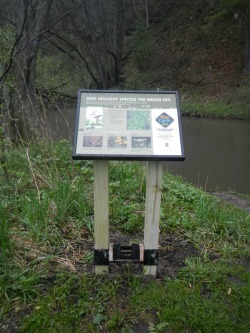Traveler - WOW for Wildflowers!
Minnesota State Parks and Trails
Traveler
May 2017
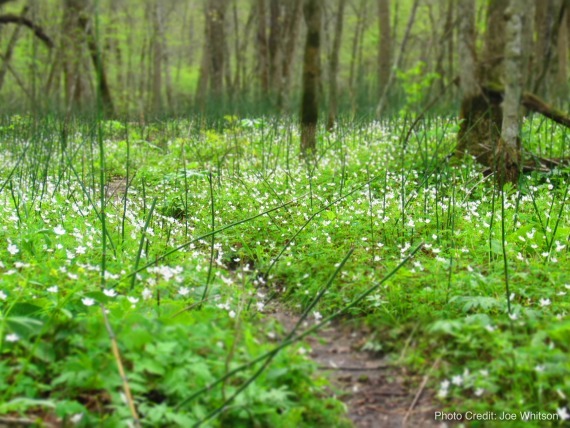
Nerstrand Big Woods State Park
Enjoy this park on foot, any season of the year. In the spring, the park is a wildflower garden where hepatica, bloodroot, Dutchman's breeches, and the dwarf trout lily bloom. The dwarf trout lily is only found here. Relax by Hidden Falls in the summer. The autumn brings a burst of red, orange, and gold in the maple-basswood forest, one of the last extensive stands of the "Big Woods." When winter comes, ski or snowmobile the trails through picturesque woods.
Nerstrand Big Woods State Park is also known for the Big Woods Dairy Farm project that once allowed for experimental conservation farming on a farm site within the park boundaries. Although the Dairy Farm project has long since wrapped up, the results continue to inspire the next generation of Minnesota farmers to work with the natural landscape.
- Find maps, directions and other park information about Nerstrand Big Woods State Park.
- See the beautiful sights of the park with this snapshot tour.
The List - Quiet Getaways 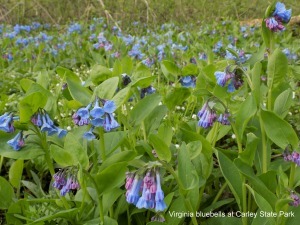
Searching for some peace and quiet? Looking for a serene spot for a romantic vacation? In the modern world, it can be hard to find relaxing spaces free from distractions. If you're in need of a calm retreat, a more private Minnesota state park might be for you.
If you desire to explore quiet parks in your pursuit of beautiful spring wildflowers, we've got the perfect places. Find a quite getaway location near you!
Make a weekend of it. Find out how to rent a cabin or reserve a campsite.
Discover - Nature Photography TipsThe following was adapted from a full length story, "Outside Shots," from the November/December 2014 issue of the Minnesota Conservation Volunteer magazine. Springtime is a wonderful time to observe and photograph nature. With the advent of smart phones and affordable digital cameras, anyone can take professional quality nature photographs. To make a good photograph, you need to look closely and add a dab of concentration and a sprinkling of creativity. Here are a few tips to help you get photos you’ll enjoy looking at for years to come.
|
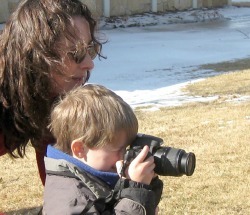 |
Read the full story "Outside Shots".
Game On! - Photo Scavenger Hunt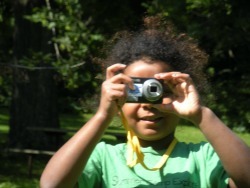
A great way to get kids excited about exploring outdoors is to use technology to guide their adventure. As a family, you can create a list of different outdoor objects, plants and wildlife that you would like to find. As you hike and explore, instead of crossing items off your list, have the kids use a digital camera or smart phone to capture photos of each object. When you return home, you can compile a scrapbook or slideshow of your adventure using your photos.
An example photo scavenger hunt list follows:
- An animal home
- A feather
- An animal track
- A purple flower
- A prickly plant
- Animal scat
- A red bird
- A leaf
- The bark of a tree
- A seed
- An insect
- Water
- A smooth rock
Find more ways to use technology to explore outdoors.
Traveler Tip - Slowing the Spread of Invasive Species
Did you know that bad plants can hitch a ride on you as you hike? These exotic invasive species can then establish in new locations and cause harm to native plants and animals.
Invasive species are species that are not native to Minnesota and cause economic or environmental harm or harm to human health. The best way to protect our natural areas from terrestrial invasive species is to prevent the spread of new invasive species to those areas. You can help prevent the spread. For example, invasive plant seeds can be transported in mud and hay. The eggs and larvae of invasive insects like emerald ash borer can be spread by moving firewood. There are a few simple things you can do to help prevent the spread of invasive species.
- Use the boot brush kiosks (pictured at right) located at most trail heads to clean your boots of mud and plant debris. A stick can also work to scrape mud from the treads of your shoes.
- Inspect your pets, belongings, boots, and equipment; remove any mud or plant debris before leaving a site.
- Dispose of plant debris and weed seeds in the trash.
Learn more about how you can stop the spread of invasive species.
May Events - Wildflower Programs
|
Find more naturalist programs.
Keep reading! For past issues of the Traveler, click here.



